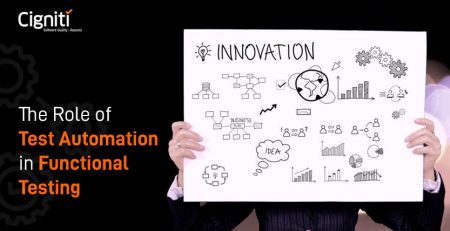Accelerate Software Delivery by Implementing Continuous Testing
In today’s economy, many organizations are embracing innovative ways to deliver software to the market to compete with the competition. As part of this innovation, software development teams are finding innovative ways to increase agility and testing teams are making sure that quality software is developed and tested thoroughly at the same speed. To align with the same speed, testing teams need to focus on continuous testing practices that enable testing teams to keep up with the agile development practices.
In this article, Kalyan Kumar Ghattu, Senior Consultant – Advisory and Transformation Services with Cigniti Technologies has emphasized on “How Continuous Testing Can Help Accelerate Software Delivery”.
Kalyan’s experience with DevOps indicates that extensive testing plays a vital role in DevOps Success. Currently, many organizations are focusing on automating their integration, build, and delivery processes, but still have trouble with test orchestration and automation.
What are the essential elements needed for Continuous Testing?
If organizations want to accelerate software delivery, they must re-evaluate their current testing practices. Organizations will have to truly consider re-engineering the software quality process as they begin to transform to Continuous Testing.
The following elements are necessary for achieving Continuous Testing:
Risk Assessment:
Assessing the project risk up front is the best practice by which we measure whether we have done enough testing and allowed the software towards release.
Consider the following elements while steering risk assessment:
- Business Related Risks
- Technical Debt
- Coverage
Requirements Traceability:
You have to make sure that there is a comprehensive set of test cases and test suites, which are aligned to the business requirements. If test assets are not aligned with the actual business requirements, Continuous Testing will become uncontrollable.
In an iteration or a major release, some tests are more important than the other test cases. Identifying and prioritizing these test cases can effectively prevent defects from downstream processes.
Most of the defects are more likely to be introduced when there is a modified code which is associated with existing one. To mitigate this, you have to come up with a change impact analysis matrix which helps in identifying affected test cases due to the change being introduced to the system.
Shift-Left:
You must focus on Shift-Left quality practices from day one of the project in order to identify problems in software development by moving testing earlier in the delivery lifecycle.
Most of the organizations execute automated test suites via a user interface as soon as the application is being developed. This practice results in the late discovery of defects, and adds risk to the project.
To reduce defects in subsequent phases, shifting integration testing left at build level process is needed. This elegant approach to Continuous Testing results in delivering the high-quality product to the market.
Automated Testing:
Complex systems are usually built on multiple applications and all these applications exchange information via different platforms. Manual testing for these applications and processes slows down the testing and causes delays in results.
Implementation of functional automation and performance testing can mitigate the challenges of testing highly integrated applications in the complex software system.
Test Optimization:
Most of the organizations will have to make cultural changes from age-old testing practices and processes, no matter what methodology is currently being used to deliver software.
Continuous Testing isn’t possible by just automating Unit, Component, Integration, Functional, performance and Security testing activities. To achieve Test Optimization, a uniform workflow needs to be established with associated processes and policies at the beginning of the project.
Service Virtualization:
Organizations that rely on interconnected systems must be able to validate changes more early and effectively, not only for integration issues, but also for risks associated with performance and security aspects.
By leveraging Service Virtualization, organizations can validate changes continuously. Service Virtualization brings higher quality products to the market, faster and at a lower cost.
Conclusion:
Continuous Testing enables organizations to deliver quality software through automatic checking, continuous feedback in each stage of the STLC, and fast delivery of products with new features to the market.





Leave a Reply